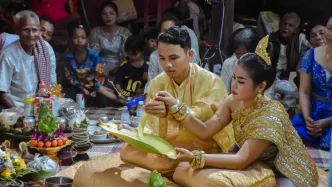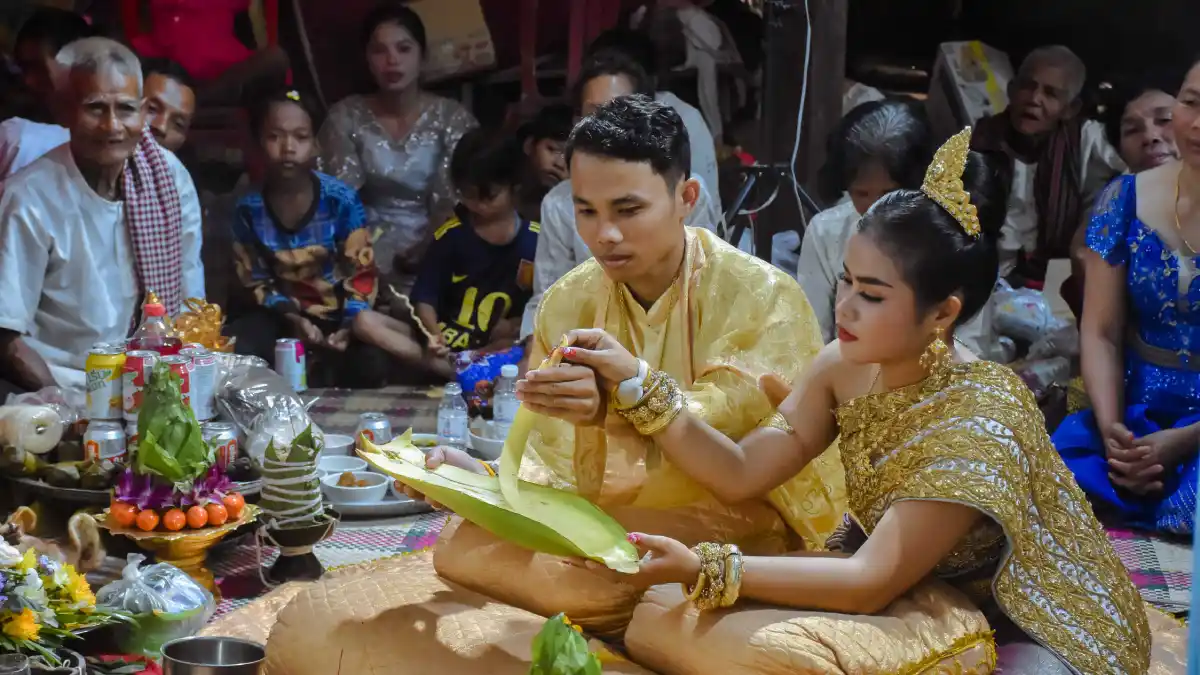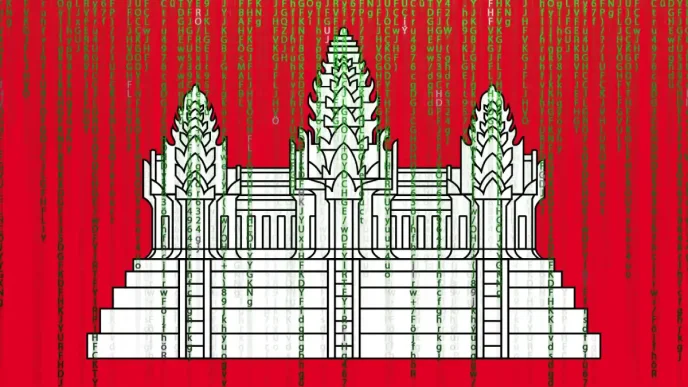Cambodia is making steady progress in its bid to have the traditional Khmer wedding, officially termed “Khmer Marriage, Khmer Wedding,” inscribed on UNESCO’s World Intangible Cultural Heritage List. The nomination, submitted in April 2024, aims to preserve and promote a centuries-old tradition central to Cambodian identity. However, the application has stirred controversy with neighboring Thailand, which has raised concerns over alleged use of images depicting Thai traditional attire in Cambodia’s submission, adding a layer of regional tension to an otherwise cultural endeavor.
A Cultural Legacy Under Review
Cambodia’s Ministry of Culture and Fine Arts has been diligently working on the nomination process since its submission to the Secretariat of the Intangible Cultural Heritage (ICH) Committee on April 2, 2024. Sum Map, secretary of state and spokesperson for the ministry, addressed the media on July 8, 2025, emphasizing the significance of the initiative. “The primary goal of the Kingdom of Cambodia in nominating ‘Khmer Marriage, Khmer Wedding’ for UNESCO’s World Intangible Cultural Heritage List is to preserve and protect Khmer traditions that have existed since ancient times” he stated. He further noted that Cambodian citizens continue to actively safeguard and practice this invaluable heritage.
The Khmer wedding tradition, as described by Map, encompasses a wide array of cultural practices, including wedding preparations, ceremonial music and songs, traditional attire, and personal adornment. These elements, deeply rooted in Cambodian society, are seen as indispensable to the lives of Khmer couples. The nomination process is currently in the evaluation stage, with independent experts from the ICH reviewing the submission. A formal review for registration is anticipated by the end of 2026, marking a significant milestone in Cambodia’s efforts to gain international recognition for its cultural heritage.
Map also highlighted the collaborative nature of the nomination, crediting state institutions, the private sector, and cultural practitioners for their close cooperation. This collective effort underscores the importance of the Khmer wedding not just as a ceremony, but as a living tradition that continues to shape Cambodian identity. Beyond preservation, the nomination seeks to showcase Cambodia’s ancient culture and civilization to a global audience, placing its wedding traditions on the world stage.
Thailand’s Concerns and Clarifications
While Cambodia’s application progresses, it has not been without controversy. Thailand, a neighboring country with its own rich cultural heritage, has accused Cambodia of incorporating images of Thai traditional wedding attire in its UNESCO submission. The claim gained attention when Paethongtarn Shinawatra, Thailand’s suspended Prime Minister and current Minister of Culture, publicly raised the issue. This accusation has sparked a diplomatic and cultural debate, highlighting the sensitivities surrounding shared cultural elements in the region.
However, a report by Khaosod English on July 8, 2025, offered a counterpoint from Prasop Riengngoen, Thailand’s permanent secretary for Culture. Riengngoen clarified that Cambodia’s nomination does not, in fact, include Thai attire, suggesting a possible misunderstanding or miscommunication. This statement has done little to quell the underlying tensions, as Thailand simultaneously announced its intention to nominate its own traditional attire for inclusion on UNESCO’s World Intangible Cultural Heritage List. The overlapping ambitions of both nations underscore the competitive nature of cultural recognition on an international platform and the potential for such bids to reignite historical or regional rivalries.
Cultural Heritage as a Regional Flashpoint
The disagreement between Cambodia and Thailand over cultural heritage is not an isolated incident but part of a broader history of cultural and territorial disputes in Southeast Asia. Both nations share deep historical ties, with overlapping influences in art, architecture, and traditions due to centuries of interaction, migration, and conflict. The Khmer Empire, which once spanned parts of modern-day Thailand, Laos, and Vietnam, left a lasting imprint on the region’s cultural landscape. This shared heritage often complicates efforts to distinctly attribute traditions to one nation over another.
In recent years, similar disputes have arisen over cultural symbols, such as the ownership of traditional dances, costumes, and even culinary dishes. The current contention over wedding attire imagery reflects a broader struggle for cultural ownership and recognition. For Cambodia, achieving UNESCO status for the Khmer wedding would affirm its cultural sovereignty and historical legacy. For Thailand, protecting its own traditions from perceived appropriation is equally significant, especially as it prepares its own nomination for traditional attire.
Cultural heritage, while a source of national pride, can also become a geopolitical tool. UNESCO inscriptions often carry economic benefits, boosting tourism and international interest, which adds another layer of stakes to these nominations. The Cambodian government’s push for recognition aligns with broader efforts to promote the country as a cultural destination, particularly through sites like Angkor Wat, already a UNESCO World Heritage Site. Similarly, Thailand’s cultural tourism industry, one of the largest in the region, stands to gain from further international acknowledgment of its traditions.
The Significance of Khmer Wedding Traditions
At the heart of Cambodia’s nomination is the Khmer wedding itself, a multi-day ceremony steeped in symbolism and community participation. Typically lasting three days, though often condensed in modern times, the event includes rituals such as the “Hair Cutting Ceremony” which symbolizes purification, and the “Knot Tying Ceremony” where elders bless the couple by tying strings around their wrists. Traditional attire plays a central role, with brides often wearing intricate sampot (a type of sarong) and grooms donning silk garments adorned with gold embroidery, reflecting Cambodia’s historical ties to silk weaving and craftsmanship.
Music and dance are equally integral, with traditional instruments like the tro (a bowed string instrument) and khim (a hammered dulcimer) accompanying ceremonial songs. These elements, passed down through generations, are not merely performative but embody spiritual and social values, reinforcing familial and communal bonds. The continued practice of these traditions, as Map emphasized, demonstrates their resilience amid modernization and globalization, making them a fitting candidate for UNESCO’s intangible heritage list.
For many Cambodians, weddings are more than personal milestones; they are public affirmations of cultural continuity. In a country that endured the Khmer Rouge regime’s devastating attempts to erase cultural and historical memory in the 1970s, preserving traditions like the Khmer wedding carries profound significance. It represents a reclaiming of identity and a defiance against historical erasure, resonating deeply with a population still healing from past traumas.
Navigating Regional Sensitivities
The contention with Thailand highlights the delicate balance Cambodia must strike in pursuing cultural recognition. While the nomination process is a celebration of national identity, it also requires diplomatic finesse to avoid escalating tensions with neighbors. The clarification from Thailand’s permanent secretary for Culture suggests room for dialogue, but the underlying sensitivities remain. Both nations would benefit from collaborative approaches to cultural preservation, perhaps through joint nominations or mutual acknowledgment of shared heritage, as seen in other regions with overlapping traditions.
UNESCO’s role in this context is not just to recognize cultural practices but also to foster understanding and cooperation. The organization’s Intangible Cultural Heritage List aims to protect traditions while encouraging dialogue among communities. As Cambodia’s nomination moves forward, it will be crucial for all parties to focus on the shared value of cultural preservation over competitive claims of ownership. The evaluation stage, ongoing until 2026, offers time for such discussions to unfold.
Looking Ahead
As Cambodia awaits the outcome of its UNESCO nomination, the journey of the Khmer wedding from local tradition to global recognition continues to unfold. The process is a testament to the resilience of Cambodian culture and its people’s commitment to safeguarding their heritage. Yet, the regional tensions it has sparked serve as a reminder that cultural heritage is never just about the past—it is deeply intertwined with present-day politics and identity.
Whether the Khmer wedding secures its place on UNESCO’s list remains to be seen, but the debate it has ignited underscores a broader question: how can nations celebrate their unique traditions while respecting shared histories? For now, Cambodia presses forward, hoping to share its ancient rites with the world, while navigating the complexities of regional diplomacy.
















